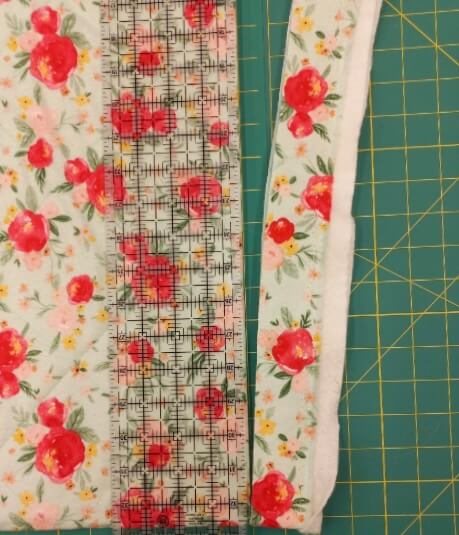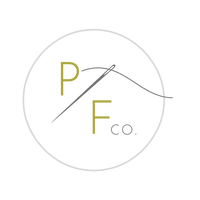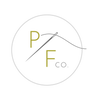Oh, hello! How long have you been here? Have you been reading Piece Fabric Co.'s blogs for over a year now? Because today we are talking about whole cloth quilts, but it's not the first time I've written a blog post on them!
When we received our first shipment of double gauze, I was determined to figure out the perfect combination of double gauze and... well, whatever other fabric was perfect to make the most luxurious whole cloth quilt. You can read that blog post HERE, and then once you're fully convinced that you need one, come back to this post to find out how to make it!
....
....
Alright, you're back? Which version was your favourite? I also just re-read that post and I have a clear winner from those three variations. It was the double gauze paired with the Warp & Weft fabric. Since both fabrics are such a soft, loose Woven, the cuddle factor on that one was 100.

As more shipments of double gauze arrived, bringing more colours and more options to colour match with fabric, we started pairing double gauze and Art Gallery Fabric quilting cottons to make the cutest and softest baby blankets.

A cute print on one side with a coordinating double gauze on the other side, quilted simply, and a solid binding... this is a quilt that can be put together in almost no time at all!
Since it is such a quick and satisfying project, brand new and experienced quilters alike love it. For beginners, it's an opportunity to practice basting the quilt sandwich and quilting on a small, manageable project. There are no corners to line up, no half square triangles to trim - just two pieces of fabric sandwiching some batting.
If you are an experienced quilter, you've likely heard all you need to hear and are ready to take on this project. But if you're a beginner... don't worry... I've got you covered! Read on and let's get you started on this simple project!

Whole Cloth Quilt Instructions (fabric measurements given for baby size, finishing around 42" x 42")
Requirements:
Backing - 1.5 yards extra wide fabric (50-55” wof) **
Top - 1.25 yard standard width fabric (42-44” wof)
45” x 45” batting (if desired)
½ yard of fabric for binding
Thread
Spray baste (our favourite is ODIF 505) or safety pins and painters tape for basting (these are perfect)
**You can use standard width fabric for this, it just makes it a little more difficult when basting the quilt. Most of the double gauze we now carry is 50" or more in width, making it the perfect backing fabric. See it all HERE.
Have all of that? Alright, let's move on! You have two options for basting (that's the name of the step where you secure the three layers together - backing, batting, and top - before moving on to quilting. You want to have them well secured together so that there is no shifting and bunching while you quilt). Choose Pin Basting or Spray Basting instructions from below:
Pin Basting
Using painter’s tape, tape the backing fabric to a smooth surface (floor is common) wrong side up, ensuring it is taut, not tight. Use an approximately 4” piece of tape every 8-12” along all four edges of the backing.
Smooth the batting out on top of the backing fabric, centering it. Ensure it is wrinkle free.
Smooth the top fabric on top of the batting, centering it. Working from the center out, use safety pins to secure all three layers together, ensuring safety pins are no more than 4” apart. Smooth the fabric outward, once again making sure that there are no wrinkles as you pin it together.
 Spray Basting
Spray Basting
Spread out the batting on a flat surface that is protected from overspray.
Centre the backing fabric on the batting, wrong side down. Fold the backing back halfway on itself, keeping half of it on the batting.
Spray the exposed batting evenly with the spray baste, and working quickly, carefully and evenly unfold the backing fabric onto the sprayed batting, pressing down lightly while smoothing, making sure there are no wrinkles or puckers.
Now, fold the unattached half of the backing back onto itself, and spray the exposed batting. Working quickly, carefully and evenly unfold the backing fabric onto the sprayed batting, pressing down lightly while smoothing, making sure there are no wrinkles or puckers.
Flip the backing and batting over so that the batting is on top. Repeat steps 2-4 with the top fabric.
Watch this video to see a speedy view of Amber spraying the batting and smoothing out one side of the fabric:
Quilting
A grid or pattern with 4”-6” of spaces between the quilted lines will allow the quilt to remain nice and drapey.

The lines can be marked on the quilt before starting, using a washable pencil or a tool like a Hera marker.
 (The Hera marker lines show up as white, and the Bohin Pink Chalk pencil shows up as pink. Both work very well.)
(The Hera marker lines show up as white, and the Bohin Pink Chalk pencil shows up as pink. Both work very well.)
Next up - bring it over to your machine or grab a needle and thread if you are quilting by hand. If you machine quilt, don't go fast! Easy does it so that no wrinkles develop. If you pin basted, remove the pins as you get close - don't quilt over them!!
Upon completion of the quilting, trim the quilt to the desired size, usually determined by the size of the quilt top, squaring it up. If you used a wider fabric for the backing, as listed in the requirements, you'll end up trimming off several inches of it.

Great job! All you have left to do is the binding. You've got this!
If you've never bound anything before, that's okay. There's quite a few steps but it's not too difficult. We have a whole separate tutorial to walk you through it, here you go!
....
Back already? See? It's a really fast project. In no time flat, you'll have a whole basket of these quilts.

Once you've conquered the baby size, feel free to try another one - Autumn made herself (what she calls) an "adult size baby quilt" out of white double gauze and another woven fabric for supreme softness:

Isn't it great??
Alright. Here are products and answers to your questions:
What are the best fabrics to use for this?
We love using double gauze on one side as it produces such a soft feel. It's even better if you use double gauze on both sides or another woven fabric on the second size (by woven, we mean a loose-weave fabric, not a densely woven quilting cotton). But, if you have a favourite high-quality quilting cotton you'd like to use, by all means, go for it! Shop the links below:
Which batting do you use?
These quilts are all about the lightweight cuddle, so we use the lightest cotton batting we carry. It allows the double gauze to remain soft and drapey.
Quilters Dream Request batting
Another option that offers just a bit more density and warmth is the bamboo blend:
Quilters Dream Bamboo blend batting
Which fabric should I pick for the binding?
Good question. The double gauze can be tricky to work with in strips, so I steer away from that. If you are using a quilting cotton on the other side, you could repeat that, but I like to pick a coordinating solid - it helps frame both sides and is a nice addition. Choose from:
Art Gallery Fabrics Pure Solids
Which thread should I use for quilting?
Oh, you have all of the good questions today!! We use Aurifil cotton thread for both piecing and quilting our quilts. Since there is no piecing for this project, let's talk about the quilting thread. Aurifil comes in multiple weights (thicknesses). 50wt is the most common and can be used for both piecing and quilting. As the number gets smaller, the thread gets thicker and will produce more pronounced quilting lines. Since this is such a simple project, I like to add that touch, so will often choose 40wt or 28wt top thread (while keeping the bobbin thread a 40wt or 50wt).
This is also a really good time to try out hand quilting! For that, I like to use Aurifil 12wt or Trailhead Yarns 8wt thread. Those are both chunky threads that create a beautiful, thick hand quilting line. It's the perfect handmade touch!
Here are the links:
Okay. Honestly, I'm feeling a little overwhelmed and don't know where to start!
Oh perfect! No, seriously... because these types of projects thrill us and we'd love to help you pick the perfect fabric and answer any other questions that you may have. Send us a message on Facebook or Instagram, or email to info@piecefabric.co.
And don't forget, we love to see your finished projects! Don't forget to tag us on Instagram @piecefabric.co.
Have fun!
-Kendra


